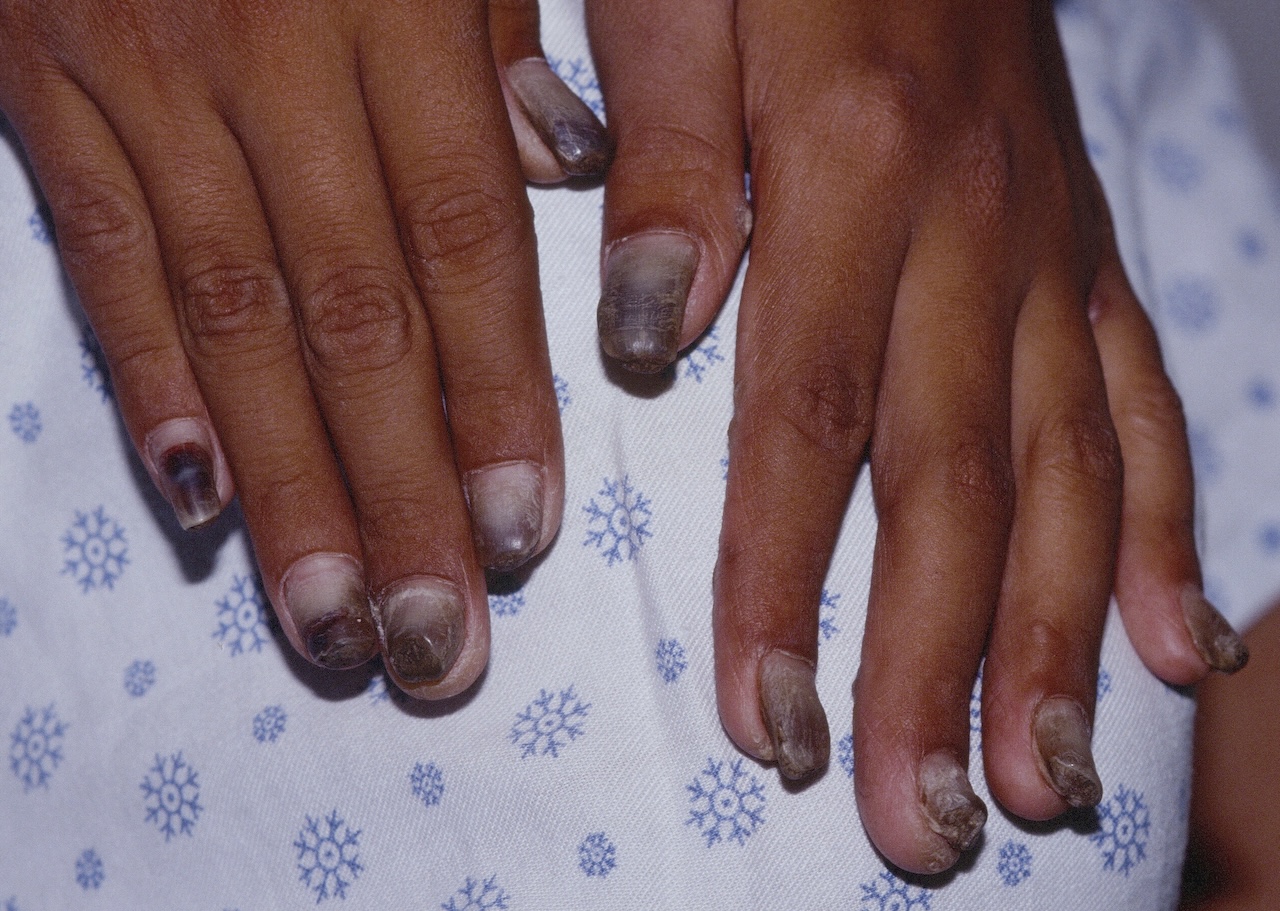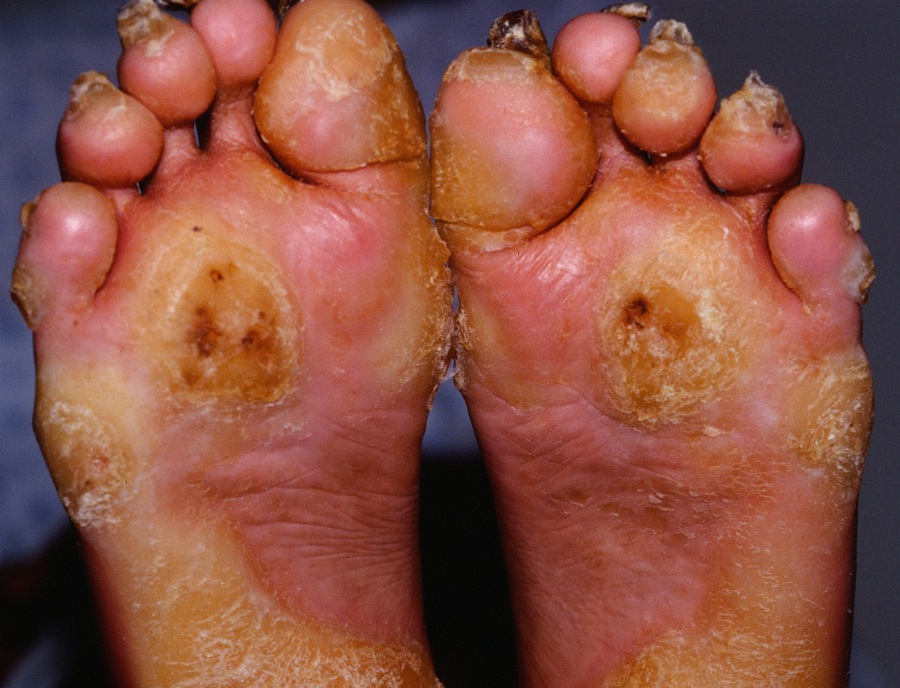
Thickened nails, the first sign. In one study, 40% of patients had fingernail changes at birth.

Thickened nails, the first sign. In one study, 40% of patients had fingernail changes at birth.
 Palmoplantar keratoderma, the most debiliting aspect of this disease. Although present at birth in fewer than 10% of individuals, 25% of PC patients noted plantar keratoderma by 1 year of age and 75% by 5 years of age.
Palmoplantar keratoderma, the most debiliting aspect of this disease. Although present at birth in fewer than 10% of individuals, 25% of PC patients noted plantar keratoderma by 1 year of age and 75% by 5 years of age.
Pachyonychia congenita (PC) is an autosomal dominant disorder in which all fingers and toenails are greatly thickened, hard and curved transversely. It is caused by mutations in one of five keratin genes; KRT6A, KRT6B, KRT6C, KRT16 or KRT17. To date, no genetically confirmed cases have an autosomal recessive inheritance pattern. In the past, two phenotypes were described. Type 1 phenotype (nail dystrophy, palmoplantar keratoderma, and oral lesions), and type 2 phenotype (nail dystrophy, pilosebaceous cysts following puberty, natal teeth). However, given the availability of genetic testing, current classification is based upon the underlying gene mutation (i.e. PC-K6a, PC-K6b, PC-K6c, KRT16 and KRT17).
The nails are thickened with significant curvature. There is often a palmoplantar keratoderma. Keratotic papules may occur on the knees and elsewhere.
In one study, nail thickening and plantar keratoderma occurred before school age in more than three-quarters of children. For adolescents, the most psychologically disturbing features were the visible nail changes and the painful plantar thickenings.
Many adults use canes or crutches to walk. Ultrasound has shown occult plantar blisters in the soles of patients causing great pain. 45% of patients have no family history. Over 100 different mutations have been identified.
Homepage | Who is Dr. White? | Privacy Policy | FAQs | Use of Images | Contact Dr. White